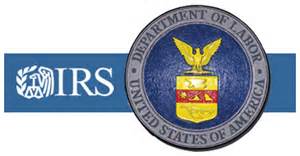
2017 Form 5500 – No Big Changes
The IRS has released advance copies of the 2017 Form 5500 and instructions. The previous year’s optional compliance questions are gone, along with information about paid preparers. We don’t expect to see a major revision for several years.
Tax Reform
As of this writing, Congress is still working out tax reform legislation. The good news so far is that we’re not seeing anything that negatively impacts ESOPs.
Minimum Distributions and Missing Participants
The IRS has directed its examiners to not challenge qualified plans for failing to make minimum distribution payments for participants age 70 ½ or older if the participant cannot be located after a good faith effort is made to find them. That good faith effort includes:
- Searching plan and related plan, sponsor, and publicly available records for directories for contact information.
- Using any of the following search methods: commercial locator service, credit reporting agency or proprietary internet search service.
- Sending certified mail to the last known mailing address.
Year End Reminders
For calendar year plans, a sponsor’s year end To Do list includes:
- Adopt amendments for any proposed changes in plan design.
- For 401(k) plans, that might include an automatic enrollment feature or changes in the plan’s automatic enrollment default rate.
- For ESOPs, that might include an amendment incorporating the most recent IRS guidance on diversification timing. The guidance states that a plan may provide that the 90-day diversification election period starts on the date that the share value is provided to participants. That eliminates the need to deliver preliminary notices within the first 90 days after year end, followed by a final notice once share value is known.
- For all plans, that might include an amendment to increase the distribution consent (force -out) limit to $5,000 if it is not already set at $5,000.
- Update Summary Plan Descriptions (SPDs) if needed, and ensure that all participants received a copy. SPDs must be updated every 5 years if the plan has been amended during the 5-year period and once every 10 years otherwise.
- Ensure participants have received Required Minimum Distributions (RMDs). For most plans, RMDs are required if a participant attains age 70 ½ and has terminated employment. RMDs are also required for those who were over 5% stock owners when they attained age 70 ½.
- Ensure all required notices have been sent to participants, including safe harbor and qualified default investment notices. Also, ensure that the most recent Summary Annual reports have been sent to participants.
- Search for lost participants. Complete plan year distributions, including force - out distributions for those whose vested balance is under the plan’s consent limit and who have not responded to distribution notices.
- Many 401(k) plans provide that forfeitures will be used to pay plan expenses or offset employer contributions. Ensure that forfeitures are being used and are not being carried over from year to year.
- Remind participants to complete beneficiary designation forms and update their address on file with the plan, if needed. If participants are completing paper forms, confirm that the forms are complete.
- Consider any management letter comments that were communicated to the plan sponsor by the plan’s independent auditors.
- Start thinking about your desired timeline for completion of 2017 plan reports and your 2017 plan audit. If last year’s turnaround was not satisfactory, determine what actions can be taken to achieve better results. Can the ESOP’s appraisal report be completed earlier? Can the auditors start their audits earlier, or complete some audit procedures before the ESOP share value is known?
